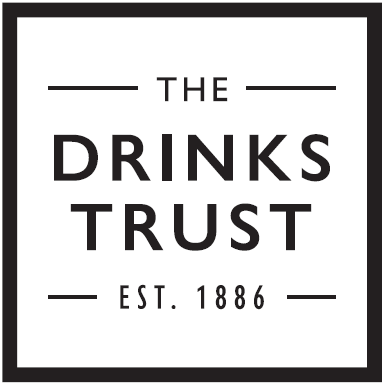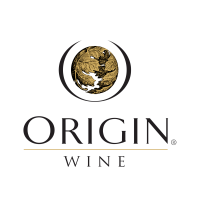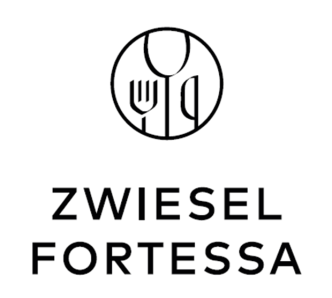According to a new study from Switzerland, pre-flowering LR often has additional consequences compared to post-flowering LR, such as yield limitation, higher fruit maturity index and higher anthocyanin concentration in the must at harvest, with positive effects on wine composition.
The six-year field trial on the Swiss white grape variety Petite Arvine found: “Pre-flowering LR reduced harvest yield by decreasing the number of berries per cluster. Unpredictable climatic conditions prior to flowering, such as cold temperatures and low light levels, significantly influenced fruit set and amplified the negative effects of pre-flowering LR, increasing the risk of excessive yield loss. Adjusting the timing of LR from the 'separated flower buds' stage to the 'flowering' stage provided a means to manage yield loss effectively. Compared to pre-flowering LR, LR applied at the flowering stage decreased acidity and yeast assimilable nitrogen concentrations, increased the concentration of the aroma precursor Cys-3MH in the must at harvest, and slightly enhanced the overall quality of the white wine.”
This study went further and examined the impact of compensating for the leaf area removed near the bunches by increasing canopy height (from 100 to 150cm) on grape and wine composition, in particular varietal thiols and thiol precursors.
The study reported: “Increasing trimming height to compensate for leaf removal in the cluster area increased the leaf-to-fruit ratio, and slightly improved both grape ripeness at harvest (higher TSS, lower tartaric acid) and wine sensory profile (higher colour intensity, floral, volume and overall impression).”
The study concluded: “The combination of LR at flowering and increased canopy height appeared to be a good compromise, mitigating yield loss and slightly improving wine composition in terms of Cys-3MH accumulation in the must.”
For those who want to know more about leaf removal – or cluster-zone defoliation – we have compiled the following guide or refresher.
What is leaf removal?
It is a widely used canopy management tool. By selectively removing leaves around the fruiting zone, viticulturists can balance the vine’s carbon sources, microclimate, and exposure to sunlight. In grapevines, leaves are both carbon sources for berry growth and shade providers that moderate berry temperature. Defoliation thus trades off photosynthetic leaf area against enhanced light, heat, and airflow to the clusters. This practice limits fungal disease and can improve wine quality but must be done carefully to avoid excessive yield loss or sunburn.
Why is the timing important?
Leaves closest to the clusters supply carbohydrates and influence berry set and development. Early leaf removal (pre-bloom or at flowering) cuts the vine’s carbohydrate source at a critical time, reducing berry set and ultimately yield. In the Swiss study, heavy pre-flowering removal of all basal leaves halved the yield potential (–47%). By contrast, defoliation after fruit set typically has little effect on final yield. In addition, removing leaves radically alters the cluster microclimate: sunlight and heat can raise berry temperature, promote thicker skins and higher sugar accumulation, and reduce humidity (lowering fungal risk). Increased light exposure often boosts phenolic compounds and aromatic precursors (eg. norisoprenoids, thiols), though the response is highly variety- and climate-dependent. In summary, leaf removal improves fruit exposure and can enhance ripening and quality, but excessive removal can expose berries to damaging heat and sunburn.
'Not all leaves contribute equally'
Did you know...
Not all leaves contribute equally. Mature basal leaves have the highest photosynthetic rates, while very young leaves (1–20 days old) are still developing. Studies show basal leaves on lateral shoots assimilate 20-30% less than primary leaves before veraison. Thus, removing older main leaves impacts the vine’s carbon budget more than plucking laterals, even though laterals in the cluster zone often shade fruit. The Swiss researchers note that removing the main leaves allows lateral shoots to proliferate and partly compensate for lost leaf area, with moderate yield penalty but higher must acids and glutathione. In practice, many viticulturists target the older basal leaves directly beneath clusters (“basal defoliation”) to open the fruit zone while leaving some leaf area elsewhere for ripening.
When is the best time for leaf removal?
- Pre-flowering vs. post-flowering: The timing of defoliation strongly influences outcomes. Early (pre- or at-bloom) leaf removal dramatically reduces berry set and yields, often by 30-50%. This can be a deliberate strategy to control excessive crop and increase skin-to-pulp ratio: multiple studies report earlier removal yields smaller, more concentrated berries with thicker skins. Early defoliation also opens the canopy during the critical period for flower and fruit development, improving spray penetration and cutting rot in tight clusters.
- By contrast, leaf pulling after fruit set (berry pea-size) generally has minimal effect on final yield and is often used to fine-tune microclimate without large crop loss. In practice, many growers target the fruit zone between flowering and veraison: this provides disease control and sun exposure without sacrificing a large portion of the crop. For example, an Oregon study found that three basal leaves per shoot removed at bloom or at fruit set did not significantly change juice metrics or sensory wine profile.
- Late removal: Defoliation at veraison or later is less common due to sunburn risk, especially on sensitive varieties. Dr Joanna Gambetta’s research on Australian Chardonnay highlights that berries can sunburn in minutes once surface temperature exceeds ~40-43 °C. To mitigate this risk, some vineyard managers delay any major leaf removal in mid-summer and instead plan exposure after veraison. If done then, it is usually light and aimed at accelerating final ripening in cooler regions.
Summary of effects
Recent reviews and field trials summarise the timing-intensity trade-offs:
- Early defoliation (pre-bloom) yields the strongest effects: lower yields, smaller clusters, thicker skins, higher soluble solids and phenolics.
- Removing leaves at or just after bloom reduces cluster compactness and disease but with moderate yield loss.
- Post-fruitset removal usually preserves yield, giving modest composition benefits but potentially increasing sun exposure as ripening progresses.
How does the variety affect leaf removal strategies?
Different grape varieties demand tailored defoliation approaches. Key points for major varieties include:
Cabernet Sauvignon: Thick-skinned and late-ripening, Cabernet often benefits from cluster exposure to build tannins and flavour. Moderate leaf pulling around fruit set is common to improve aeration and phenolic ripening. In warm regions like Napa, extreme openness can risk sunburn, so growers typically leave some leaf shade on hot afternoons. Research indicates Cabernet increases anthocyanin accumulation with early defoliation but also shows sunburn severity rising if leaves are removed too late in hot climates.
Merlot: Softer-skinned and earlier-ripening than Cabernet, Merlot is often managed similarly but sometimes with slightly lighter defoliation. Merlot vines can be vigorous, so moderate basal leaf removal around bloom can improve fruit set balance and reduce unripe “green” flavours. However, Merlot’s thinner skins make it more susceptible to sunscald in very hot sites, so many New World Merlot growers limit late-summer defoliation or keep more west-facing leaves intact.
Pinot Noir: Very sensitive to sun and heat, Pinot Noir requires a cautious approach. Many Burgundy and Willamette viticulturists do limited defoliation – just enough to ventilate the canopy and control mildew but leaving significant shade on clusters. For example, Larry McKenna (of Escarpment Vineyard in New Zealand) removes only about 60% of cluster-zone leaves on Pinot. He says: “We want some exposure… but not full exposure.” Early leaf removal can enhance colour and mouthfeel in Pinot, but excessive exposure can degrade delicate aromatics and cause sunburn. In practice, hand or machine deleafing on just one side is typical.
Chardonnay: Chardonnay benefits from some cluster-zone defoliation to reduce Botrytis and encourage flavour precursors, but is highly prone to sunburn. Many growers remove a few basal leaves at or shortly after bloom, then re-assess canopy cover later. A Virginia study found little difference in Chardonnay fruit or wine chemistry when defoliation was done at bloom versus post-fruit set, suggesting flexibility in timing. However, most practitioners avoid full-sun exposure in peak heat. New South Wales research warns that sunburn can rapidly shrivel Chardonnay berries, emphasising the need for judicious timing.
Syrah (Shiraz): Syrah has a thick skin and thrives in high light, especially in warm regions like the Rhône and Barossa. Many Syrah vineyards practice late-spring or veraison defoliation to boost phenolic ripening, as Syrah can tolerate high sunlight. However, if vines are very vigorous or yields are high, mid-season thinning of leaves (or even shoot positioning) may be used to focus ripening. In ultra-hot climates, some shade is still desirable – for example, Barossa Shiraz growers often retain leaves on the western side to guard against extreme afternoon sun. Syrah’s resilience makes leaf removal less controversial than with Pinot, but still requires balancing sun gains with drought stress and potential sunburn on over-exposed clusters.
Sauvignon Blanc: An aromatic white, Sauvignon Blanc’s flavour depends on canopy light. Defoliation generally increases desirable thiol and terpene aromas by enhancing sun exposure, while reducing “green” methoxypyrazines. A study on two SB clones found that fruit-zone leaf removal significantly decreased perceived greenness and elevated fruity aromas in one clone. In New Zealand’s sunny Marlborough, vigorous SB vineyards often remove 40-60% of cluster-zone leaves after fruit set to maximise flavour precursors (reducing shade to boost thiols), whereas in cooler climates they may remove less to preserve acidity. Clone choice also matters: some clones (eg. SB11) show bigger sensory changes with defoliation than others.
How does the practice vary in different wine regions?
Leaf removal practices vary by wine region, too, reflecting climate, prevalent varieties, and viticultural tradition. Key points in major regions include:
Bordeaux (France): Bordeaux’s maritime climate and disease pressure traditionally encourage early leaf thinning. Growers often remove leaves on the morning (eastern) side of vines around fruit set to improve sun exposure for Cabernets, while leaving some evening-side canopy to mitigate afternoon sun. The goal is to balance ripeness with rot control. In wetter years, more aggressive defoliation is used to improve spray access; in hotter vintages, some producers moderate removal to avoid sunburn on their Merlot and Cabernet Sauvignon. Bordeaux trials emphasise tailoring leaf removal to site vigour and vintage, and many large estates now use motorised leaf pluckers.
Burgundy (France): Cooler Pinot Noir and Chardonnay dominate, so modest defoliation is common. Burgundy growers typically open the fruiting zone moderately, often performing leaf removal at flowering or shortly after, just enough to ventilate clusters. Excessive exposure is avoided; as one UK consultant noted, removing leaves too late (when berries soften) risks sunburn (“like a 40-year-old person in shorts without sunscreen”). Well-timed early stripping in Burgundy can extend ripening and reduce the need for late fungicides, but winter pruning and spring shoot thinning remain the primary yield controls.
Napa Valley (USA): Many large California growers use tractor-mounted leaf pullers to efficiently open canopies. Napa’s Cabernet Sauvignon and Merlot benefit from fruit exposure to ripen tannins, but winemakers caution that too much leafing can sunburn berries if done in July–August. Practical timing often aims at bloom or just after (fruit set) for optimum results. Recent research notes that in hot inland sites, the premium is on disease reduction early and leaving protective shade later. The University of California reports that mechanical leafing can cost only ~$65/ha vs ~$321/ha manually, accelerating its adoption in the region.
Barossa Valley (Australia): Extremely hot summers make Barossa Shiraz growers conservative with leaf removal. Many yield-focused viticulturists delay defoliation until late spring or even after veraison, ensuring grapes have some afternoon shade. The rising sunburn problem has led to some innovation: eg. vine shading techniques (temporary mesh) and irrigation adjustments are used alongside minimal leaf thinning. When defoliation is done, it is often light and combined with late pruning to manage vigour. In cooler parts of the Barossa (Greenock, etc), slightly more canopy opening is practised to avoid Botrytis in very ripe grapes, but overall the trend is toward caution after the climate began trending warmer.
Tuscany (Italy): In Chianti and Montalcino, long hot summers drive moderate leaf removal practices. Many producers thin basal leaves at bloom to improve ripeness of Sangiovese but retain lateral foliage for sun protection. The Vernacchia and Sangiovese-accented blends in Chianti use leaf removal to regulate yield and sugar – often aiming for some "necessary" crop reduction rather than fruit exposure for every season. Organic growers in Tuscany may be especially diligent about canopy thinning for air flow to combat mildew. Late-season hail or disease threat can also dictate leaf removal intensity; the emphasis is on adjusting practices to the year’s weather.
Rioja (Spain): Moderate Mediterranean climate, but afternoon sun can be intense. Rioja viticulturists typically remove leaves on the east side of vines (morning sun) and may strip on the west in cooler years. The temperatures during véraison in Rioja are high, so full defoliation is rarer. Many Rioja growers open the canopy just enough to avoid Botrytis on tight Tempranillo clusters, then rely on the vine’s leaf cover to prevent overripening of delicate berries. Regional oenologists note that excessive defoliation can yield “overripe” character in wines, so a balanced approach is standard.
Marlborough (New Zealand): Famous for Sauvignon Blanc, Marlborough’s dry, sunny climate leads to aggressive early defoliation. Kiwi growers often strip a large portion of fruit-zone leaves by bloom or soon after to amplify the tropical thiol aromas NZ SB is known for. Half to two-thirds of basal leaves are removed on fruiting shoots, and fruit is typically exposed to morning sun while preserving some westward shade. Pinot Noir, the region’s second most-planted grape, is treated more gently: many Wairau Valley Pinot producers also practise the ~60% rule to slow sugar accumulation and maintain elegance. Marlborough’s work on canopy ventilation and vineyard clonal selection has been widely shared through public research programs, emphasising match of leafing intensity to vintage heat.
Mosel (Germany): Cool climate Riesling in steep south/east-facing vineyards often requires opening up the canopy for any adequate ripening. It’s common to remove leaves on the eastern (morning) side at around fruit set to capture precious sun. Some growers do double-sided defoliation (both morning and afternoon side) late August for base wine, but carefully to avoid scorching by late veraison. In noble rot sites, vineyards may keep more shade until late to encourage Botrytis. German viticultural advice stresses pre-veraison defoliation if needed for warmth – one study notes “sun exposure before veraison increases monoterpenes in Gewürztraminer”. However, Mosel growers also worry that heatwaves (now more common) might catch exposed berries off-guard.
Stellenbosch (South Africa): A warm Mediterranean climate with cooling Atlantic winds, Stellenbosch vineyards often see heavy yield unless controlled. Leaf removal here is used to improve grape balance and fight mildew. Top growers remove basal leaves at bloom for Cabernet/Merlot, but Dr Erna Blancquaert warns that upcoming heatwaves demand caution: “Judicious leaf removal should be done as we don’t know whether a heatwave might develop later”. In practice, many Stellenbosch producers use selective defoliation: pulling leaves on the east side early for ripeness, then sometimes shading fruit later into the season. Research from South Africa also shows pre-flower leaf thinning of Cabernet can improve anthocyanin maturation, though benefits can vary by clone and vineyard.
Willamette Valley (USA): Cool, maritime Willamette conditions once led to routine defoliation at bloom. Today, progressive Oregon growers are pulling back on leaf removal. As vintner Grant Coulter of Flaneur explains, they “have also had to start to minimise leaf removal… for the fear of sunburn and to extend the ripening period”. In practice, many Willamette Pinot Noir and Chardonnay vineyards now only remove fruit-zone leaves if needed for ventilation or disease control, often leaving ample canopy to shade grapes during occasional hot spells. That said, in cooler vintages or valley bottoms, moderate leaf thinning at fruit set is still used to ensure full ripeness by autumn. The balance is shifting with warming trends: Willamette viticulturists frequently cite sunburn and drought as reasons to adapt the old defoliation protocols.
What are some of the practical considerations?
Manual vs. mechanisation: Removing leaves by hand is labour-intensive. For example, high-density Oregon vineyards incurred ~$270/acre for manual cluster-zone leaf pulling. Mechanised leaf strippers (tractor-mounted) have changed the calculus: a UGA Viticulture study reports mechanical leafing costs as little as $25 per acre (≈$62/ha) versus $130/acre ($321/ha) manually at moderate density. In California, one analysis estimated fruit-zone machine leaf removal at $247/ha compared to $1,500/ha manually. Although capital costs for equipment, such as a tractor, are high, large operations often find machines justify themselves by drastically cutting per-acre costs and making timely defoliation feasible over hundreds of hectares. As a vineyard manager in Virginia noted, one tractor with a leaf-puller can cover in minutes what a crew would take hours to do. California and Oregon growers have widely adopted mechanical defoliators, especially in large estates, while smaller or premium sites may still rely on hand thinners for precision.
Sunburn risk: Practitioners agree that leaf removal must be timed carefully with temperature. Over-exposure during heat spikes is dangerous. Dr Gambetta’s project underscores that “incorrect timing of leaf removal can dramatically increase sunburnt berries”, since unacclimated grapes can burn within minutes once surface temperatures exceed ~40°C. Thus, many viticulturists avoid defoliation in mid-summer and instead opt for early (bloom) or very late (post-veraison) passes. In hot, sunny regions (eg. Australia, Napa, Stellenbosch), the afternoon sun is often blocked by leaving leaves on the west side. Some novel techniques (eg. movable shade cloths or protective sprays) are being tested to mitigate sun damage when defoliation is needed late in the season.
Disease management: Removing leaves significantly improves airflow and spray penetration. Vineyard managers report lower Botrytis and mildew in defoliated vines. For instance, at Ridgeview (England), leaf removal “reduces humidity in the fruit zone to reduce Botrytis… allows evaporation of moisture which lowers downy mildew risk”. Penn State (USA) notes that early leaf removal (just post-bloom) is an effective organic strategy to prevent bunch rot by reducing cluster compactness. One UK manager notes well-timed early defoliation allowed him to switch off sprays earlier and still hang fruit safely into October.
Cost and labour intensity: Labour shortages and costs drive many leaf removal decisions. Hand-pulling is the only option for selective thinning but can cost up to 4-5 times more than machine work. In premium vineyards where selectivity is critical (eg. premier cru Burgundy Pinot), manual defoliation remains common, despite the cost. Mechanisation yields the opposite trade-off: lower variable cost but less selectivity. For example, the Pellenc and Clemens leaf-pullers mechanically strip all leaves within set zones, which is ideal for bulk processing but may over-thin in vigorous sectors. Growers must weigh how well machines can navigate their vine training system (eg. high vs low cordon, row spacing) and whether the non-selective pull meets their quality targets.
Vine vigour and vine health: Finally, viticulturists emphasise that leaf removal intensity must suit vine condition. Overly aggressive early defoliation can deplete carbohydrate reserves. The Swiss researchers mentioned at the beginning of this article caution that intensive pre-flowering leaf stripping “may decrease the number of inflorescences primordia” in dormant wood, harming next year’s crop. For this reason, heavy early defoliation is not recommended for young or stressed vines. Instead, lightly leafing each year to gradually train the vine is preferred. In practical terms, growers adjust their defoliation plan based on pruning vigour and shoot density: low-vigour sites may need little or no leaf removal, while high-vigour sites can tolerate heavier thinning.


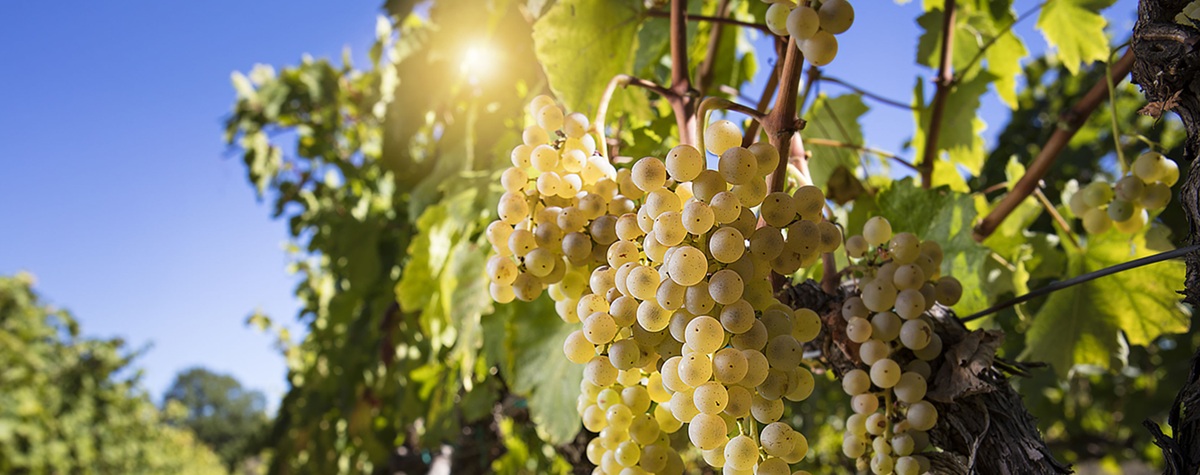




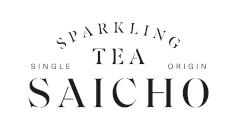

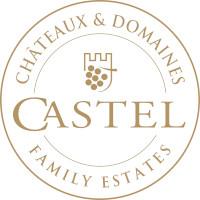
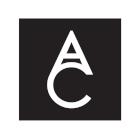

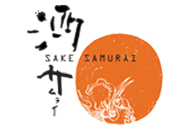
.png)

